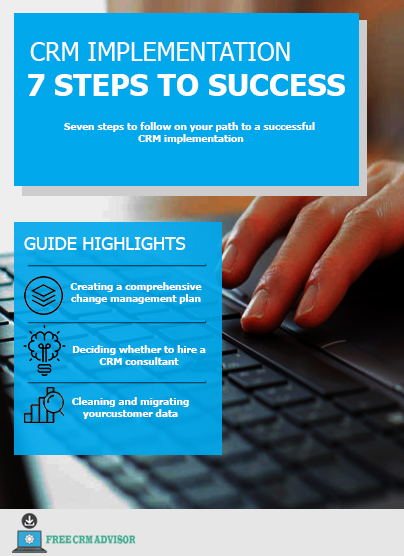Research suggests that the implementation of many open source CRM applications fail to kick in effectively, leaving functions that are in no way operational because they don’t work as they should..
Beware the 80/20 % rule
Unbelievably, up to 80% of open source CRM designs fail. Before you and your company fall into this traumatic statistic, there are a few things that you should consider before diving into an open source CRM..
You should be speaking to every department that will use the CRM and taking detailed notes. Ascertain how employees will use the CRM
1.Do you have enough finances for an open source CRM?
You should talk with each department who will use the CRM and take detailed notes. determine how employees will use the CRM and focus on those specific activities to increase the value. If the new ‘free’ CRM is not going to enhance the way they work is it worth the time?
Implement your CRM as correctly as possible the usage of our step-by-step CRM implementation guide.
The source code for open source CRMs won’t cost you anything, this doesn’t suggest an open source software program is ‘free’. Make positive you comprise hardware prices and ongoing support, development and schooling into your finances. Users of the new CRM will want to be confident that they are the usage of the brand new device efficaciously and your failure to permit for this will result in the machine falling through the wayside. If management are not organized to increase the finances to allow for this, you should re-suppose getting the brand new CRM system at all.
2.Plan the implementation thoroughly.
Look at what you need the CRM to do, selecting the functions,searches, & reporting based on each departments needs. The less difficult u make this section of the process the much less chance of it failing. Implementation must be planned
3.Development issues
When developing open source in-house, you are going to want to get entry to to a pool of ready-made expertise to tackle the cost of outsourcing. This may be costly, so always decide which route you’ll take early on and budget your finances for customization and fixes.
4.Security threats
The nature of open source is that the source code is easily-on hand to everyone – and that means hackers as well as to builders and actual customers. However, because of this it could additionally be vulnerable to being attacked maliciously. In order to prevent this you want to ensure that your security team are proactive when it comes to threats.
Now that you are more certain of spending your finances on a free CRM with the intention that it will genuinely be used. The golden rule is to look to the future effectively, take into account the needs of every customer and most of all, make certain that you have sufficient Funds to get the CRM up & running efficiently.
[elementor-template id=”3635″]
Free CRM Guides

CRM implementation guide
Plan your CRM implementation successfully with this comprehensive guide
[elementor-template id=”3803″]

Five actionable steps to improving your CRM rollout
Top10CRM.com December 19, 2019 You’ve migrated your client data,…Implementation

Three CRM implementation case studies you can learn from
Top10CRM.com December 19, 2019 CRM implementation is not usually…Implementation

Nine CRM statistics you should know before implementation
Top10CRM.com December 19, 2019 With more and more groups…Implementation